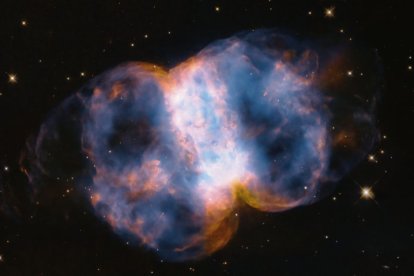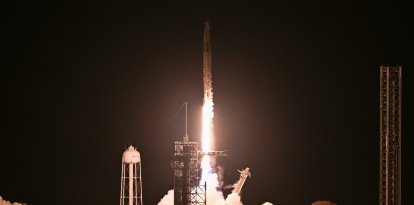NASA celebrates Hubble Space Telescope's 34th birthday
The space agency shared the image of the M76 nebula that the Hubble observatory recently sent from space.

M76
NASA is celebrating the 34th anniversary of the launch of the Hubble Space Telescope, which was sent to space on April 24, 1990 aboard the shuttle Discovery. The space agency shared an image of the M76 nebula that the observatory recently sent from space.
The photograph, explains a release from the National Aeronautics and Space Administration, or NASA, shows "an expanding shell of glowing gases that were ejected from a dying red giant star that eventually collapses to an ultra-dense and hot white dwarf." Its colloquial name "Little Dumbbell," as detailed by the agency, comes from its shape, "a ring, seen edge-on as the central bar structure, and two lobes on either opening of the ring."
This is not the only discovery that Hubble has made since it was sent into orbit 34 years ago. According to NASA, the telescope has made "1.6 million observations of over 53,000 astronomical objects." The curious thing about its findings, NASA assures, is that many were a surprise for the agency, as they "were not anticipated before launch."
The Hubble Space Telescope has been able to send images and data to NASA of transcendental moments of the cosmos of which until recently no information was available, such as "supermassive black holes, the atmospheres of exoplanets, gravitational lensing by dark matter, the presence of dark energy, and the abundance of planet formation among stars."
Hubble: 34 years discovering the cosmos
The Hubble Space Telescope was part of the STS-31 mission, a project that was planned to last 15 years but which, due to its success, extended its duration more than twice the stipulated time, recalls Infobae.
Its data, the outlet notes, is stored in the Mikulski Archive for Space Telescopes at the Space Telescope Science Institute in Baltimore. There, the space agency stores up to 184 terabytes of data processed and sent by Hubble ready for astronomers around the planet to use in their research and analysis.
Thanks to Hubble's data, a total of 44,000 scientific papers have been published and this space telescope has become "the most scientifically productive space astrophysics mission in NASA's history." The mission is nowhere near completion since, NASA notes, Hubble will continue "research in these domains and leverage its unique ultraviolet light capability on topics such as solar system phenomena" for as long as possible.
RECOMMENDATION





















